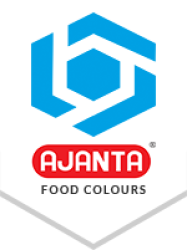_1754168930.jpg)
Synthetic food colours, also known as artificial food colours, are derived from petroleum-based chemicals that have been used in food and beverage products to enhance their visual appeal for decades. However, the industry of synthetic food colour experiences a rapid transformation because of the increasing consumer awareness, global regulations, and advancements in food science. Manufacturers, researchers, and regulatory bodies are working together so they can develop safer, more stable, and cost-effective colour solutions for food products. In this article, we are talking about some of the latest developments in the field of synthetic food colours, factors behind these innovations, and why this is important for the food, cosmetics, and pharmaceuticals manufacturing industry around the world.
1. Enhanced Stability and Heat Resistance
One of the most common challenges that manufacturers face with food colourants is that they fade or change on products when it exposed to heat, light, and different pH levels. But thanks to the recent development in the field of food dyes, which makes them capable of being stable and consistent in various conditions that making them an ideal option for fried snacks, cereals, and even instant noodles. These high-quality synthetic food colours also help in maintaining the visual appeal of the product during production and storage.
2. Microencapsulation Technology
The food colouring sector is increasingly adopting microencapsulation. With this procedure, synthetic dyes are microencapsulated which increases their solubility, dispersion, and shelf life. Microencapsulation is very useful in avoiding interactions with the food dyes and the other ingredients which also aids in preventing the food dyes from fading or undergoing chemical changes. Microencapsulation works best for synthetic lake colours which are used in dry mixes and confectioneries and powdered beverages.
3. Compliance with Global Food Safety Regulations
With the growing concerns regarding food safety, producers are now centering their attention on regulatory adherence to organizations such as the U.S. Food and Drug Administration (FDA) in the United States of America, the European Food Safety Authority (EFSA) in Europe, and the Food Safety and Standards Authority of India (FSSAI) in India. New food colour formulations are being developed to meet all the strict guidelines laid out by these governmental authorities. Innovations in FD&C certified synthetic colours ensure that they are safe for human consumption across age groups, and do not contain heavy metals, toxins, or allergens.
4. Eco-friendly Production Processes
While synthetic colours are derived from petroleum-based raw materials, newer technologies are now focused on reducing environmental impact. Companies are investing in sustainable manufacturing methods that consume less energy, reduce chemical waste, and improve product consistency. These efforts not only support environmental goals but also appeal to conscious consumers looking for ethically produced food products.
5. Customised Blends and New Shades
Thanks to digital technology and precision engineering, synthetic colour manufacturers can now create customised colour blends tailored to specific product needs. Whether it’s a unique shade of blue for a carbonated drink or a vibrant yellow for candies, these developments give food and beverage brands the creative freedom to stand out in a competitive market. Synthetic colours like Brilliant Blue FCF, Tartrazine, and Sunset Yellow FCF are now available in highly refined forms with better dispersibility and intensity.
6. Cross-industry Applications
The applications of synthetic food colours are not just limited to the food and beverages sector. There is growing interest in the use of synthetic colours in cosmetics, pharmaceuticals, personal care, and even animal feeds. As such, manufacturers are working towards creating food colourants that serve multiple purposes to harmonize regulations in all these fields, thus simplifying production and packaging.
7. Digital Quality Control & AI Integration
Another major achievement in the area that will certainly help manufacturers is the application of AI and machine learning to guarantee the quality of food colour during production. These modern technologies helps in detecting colour differences, forecasting colour accuracy and measuring exact formulation during the process. In this manner, manufacturers are able to adapt to colour requirements and ensure batch-to-batch consistency which is critical for brand identity and consumer loyalty.
Final Thoughts
The synthetic food colour technology is advancing at a breathtaking pace. There is the introduction of heat-stable colours, their microencapsulation, and even the production of colours with AI-driven checks and eco-friendly methods. For food, cosmetic, and pharmaceutical manufacturers, staying updated with these advancements isn’t just a smart business move—it’s essential for product safety, brand reputation, and global market reach.
If you are developing a food product or wish to improve the appearance of one you already have, you can go with Ajanta Food Colours, a leading synthetic food colour manufacturing company with over 75 years of legacy. Ajanta’s latest synthetic food colour technologies offer you a strategic advantage that increases your product sales and brand recognition in the market.
To explore our full portfolio of synthetic food colours for your manufacturing needs. Contact us today to request samples or get expert guidance.




